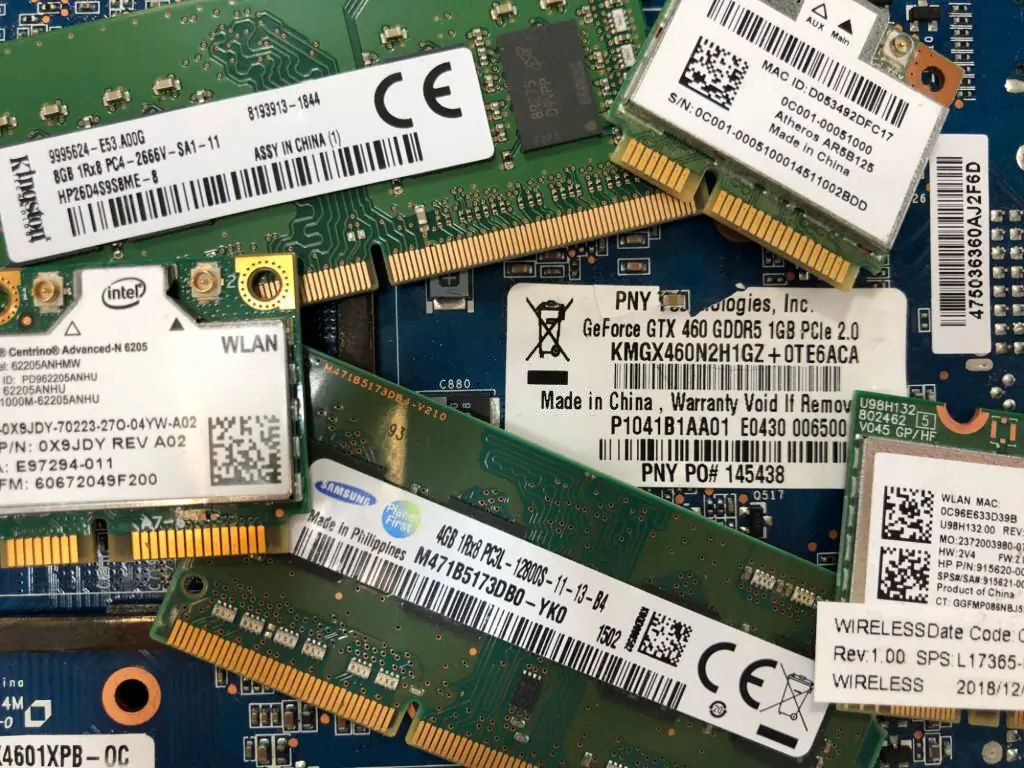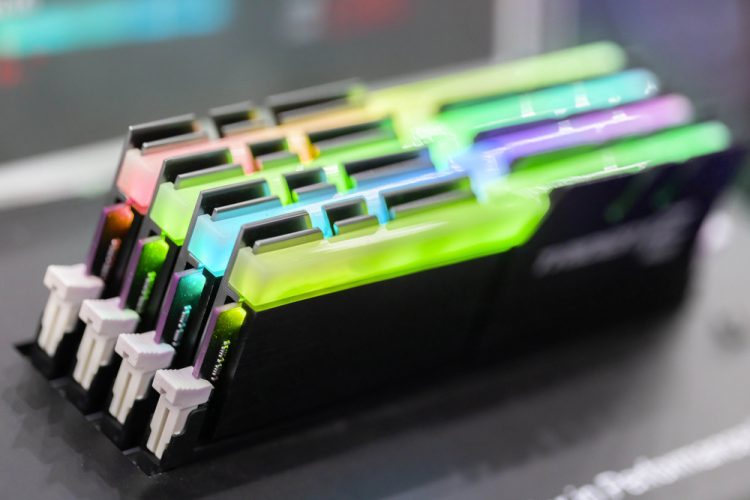Upgrading your ram is the cheapest way to boost the performance of your computer. And when it comes to adding more ram to your system, a question may come up in your mind about whether mixing two different ram brands would work or not.
Yes, you can mix ram modules from two different brands as long as they share the same DDR memory type. For example, you can pair Corsair 16GB DDR4 module with Timetec 8GB DDR4 module. Similarly, you can pair two ram modules with different speeds and capacities.
Incompatibility issues are more likely to occur when you’ll try to pair ram sticks from different DDR generations. For example, a DDR2 stick won’t work with a DDR3 or DDR4 stick.

Mixing RAM Brands: Is It Possible?
When mixing RAM brands, there are different situations that one can come across:
Situation 1: Mixing the Same Brand, Different Models
Yes, mixing the same RAM brand with different models is possible, but there are some complications or limitations that you need to know about:
First of all, you have to compare the specifications of both models. For example, you must pay attention to the clock speed, capacity, voltage, CAS timing, etc.
The more these specifications are close to each other, the higher the chances of compatibility. If both modules have different clock speeds and timings, then the system would adjust with the slower module to avoid any issues.
Situation 2: Mixing Different Brands with Different Specifications
When there are two RAM modules with totally different brands and specifications, then you can come across some minor compatibility issues (only when there’s a huge difference between the specs of both modules)
For example, one RAM module from the Corsair brand has a 2333 MHz clock speed and the other one from the Patriot brand has a 5333 MHz clock speed.
As there’s a huge difference between the clock speed of both modules, your system will choose to operate with the 2333 MHz clock speed instead of 5333 MHz.
Recommended Practices for Mixing RAM Brands
Every ram brand has its own PCB design that distinguishes them from other brands. This leads to a huge difference in performance when it comes to picking between expensive and cheaper ram modules.
CAS Latency, Dies, Clock Speed, and Voltage are some additional factors that influence the performance of a ram stick.
Ram modules from similar brands sync more easily to give you a decent boost in performance.
Moreover, the difference between single-channel and dual-channel ram sticks could cause incompatibility issues.
Single vs Dual Channel Memory
You’ll find plenty of ram brands throwing dual-channel configured memory sticks these days. And if you pair them with single-channel sticks, you’ll end up with lower performance. However, the difference in performance isn’t that noticeable unless you run ram benchmarks.
Dual-channel ram configuration yields better results when it comes to dealing with heavy workloads.

If you will be pairing dual-channel configured memory sticks from different brands, you may or may not end up with lower performance in complex workloads. Due to the difference in the configuration of each brand, both memories can end up running single-channel.
So, there are chances that incompatibility may arise, which may affect your overall performance in the end.
Clock Frequency & CAS Latency
The clock frequency and the latency of a RAM stick are the most deciding factors to consider when choosing a ram module. Both of these are responsible for the overall speed of a ram stick.
Whenever you buy a RAM module, you’ll see numbers like CL16-18-18-38 printed on either side. These numbers are referred to as CAS Latency denoted by CL. Generally, CAS Latency refers to the number of clock cycles it takes for a ram stick to access a specific set of data through one of its columns.
A RAM stick with CAS Latency 18 means that it would take cycles for a ram stick to perform a specific task. Therefore, the lower the CAS Latency, the more efficient would be the ram.
Therefore, mixing up ram modules with different CAS Latencies can cause instability issues. Especially, if one ram kit comes with a CL14 and the other one shows up with CL 18, then there would be a difference between them when accessing the data. The CL14 ram stick would be faster in accessing the data as compared to CL 18 ram.
If you pair more than two ram sticks from different brands, and all of them have different CAS Latency as well, then you may end up with slower performance. Adding ram gives you more benefit if there’s a negligible difference between CAS Latency and the clock speed of all the memory sticks.
Voltage
This is a less worrying factor that can cause incompatibility issues among ram sticks from different brands. Therefore, one of the ram sticks may not operate to its full potential due to a lack of voltage supply.
Size or Capacity
Although there are no incompatibility issues if you pair two ram modules with different capacities, you should know what may happen if you go with this configuration.
When you pair 4GB RAM with 8GB RAM from different brands, then this may end up as an “Asynchronous dual-channel configuration”. In this configuration, the first 4GB stick would sync perfectly with the 4GB out of 8GB ram stick. And the remaining memory would act as a single-channel memory.
Testing and Monitoring
After mixing two different RAM brands, it’s important to monitor your configuration by running RAM diagnostic software like MemTest86 or DocMemory Diagnostic to ensure that there are no incompatibility issues.
Memory diagnostic programs give you detailed insights into whether the different modules are working properly or not. You should also keep an eye on any signs of instability or crashes while running your system.
Why It Is Better to Install Dual Memory Modules?
Installing more than one memory module offers a lot of advantages as compared to a single kit:
Dual-Channel Memory
One of the primary reasons for using more than a single memory module is to get the maximum dual-channel memory architecture.
Modern motherboards come with dual-channel memory support where your CPU can take full advantage of the increased memory bandwidth to deliver maximum performance in memory-intensive tasks.
Faster Data Transfer
Installing more than one module gives your system enough resources for efficient data transfer between your CPU and RAM. This gives you more edge in handling memory-intensive tasks like video editing, multitasking, and gaming.
So if you are building a computer for 3D AutoCAD designing, video editing, or 3D animation creation, then pairing multiple RAM modules would give you faster performance.
Conclusion
Finally, you can mix ram sticks from different brands and it works just fine. However, try to pair ram modules that have almost the same level of specs like Voltage, CAS Latency, Clock Speed, and Channel Configuration. Furthermore, you can only pair ram from the same generation (DDR type) if you are planning to upgrade your system.
Instead of going with ram modules from different manufacturers, our advice would be to stick with a single brand. Ram modules that are made by the same manufacturer are highly compatible with each other.
The most important factors to consider when pairing two different ram sticks are clock speed and CAS Latency. If you’ll play around with these factors, then you are less likely to see any incompatibility issues among your ram sticks.
FAQs
Can you mix DDR3 and DDR4 RAM?
No, you cannot mix DDR3 RAM modules with DDR4 modules. It’s because most motherboards in the market only support a specific DDR generation. Every DDR generation has its notch placement on the sticks, so installing DDR3 modules on a DDR4-enabled motherboard would be impossible.
Does RAM have to match the motherboard?
Yes, the type of RAM you choose should be supported by the motherboard that you intend to install it on. It’s better to read the user manual of your motherboard to find out which DDR generation it supports.
What happens if you mix different ram brands and speeds?
As far as the brands are concerned, everything would be fine. But in case of different speeds, your PC will prefer running at the speed of the slowest stick.

Hi, this is Masab, the Founder of PC Building Lab. I’m a PC enthusiast who loves to share the prior knowledge and experience that I have with computers. Well, troubleshooting computers is in my DNA, what else I could say….


1 thought on “Can You Mix Two Different RAM Brands? (Mixing Modules)”